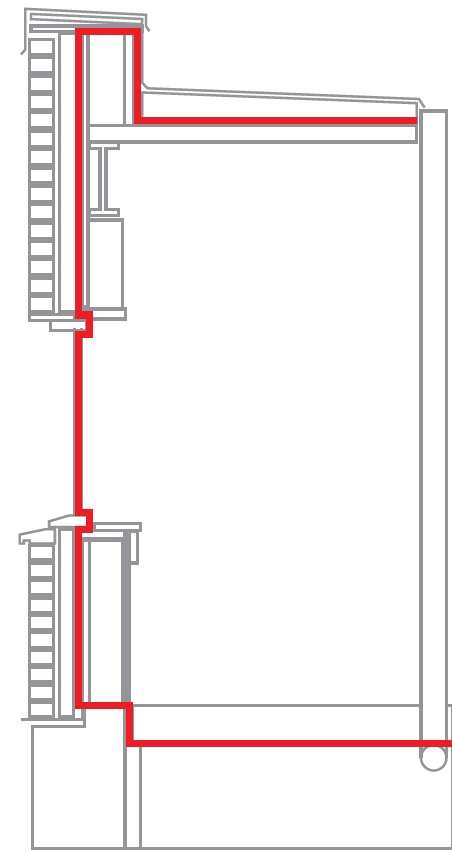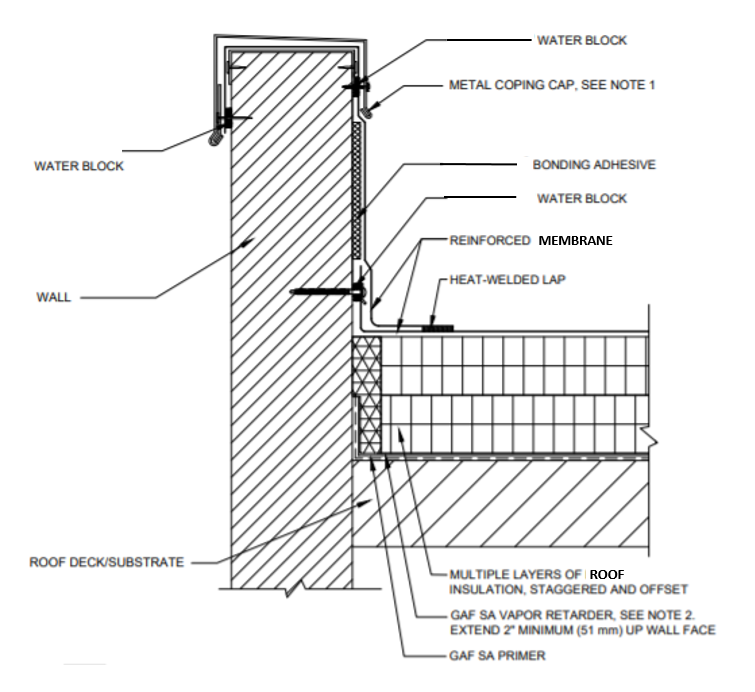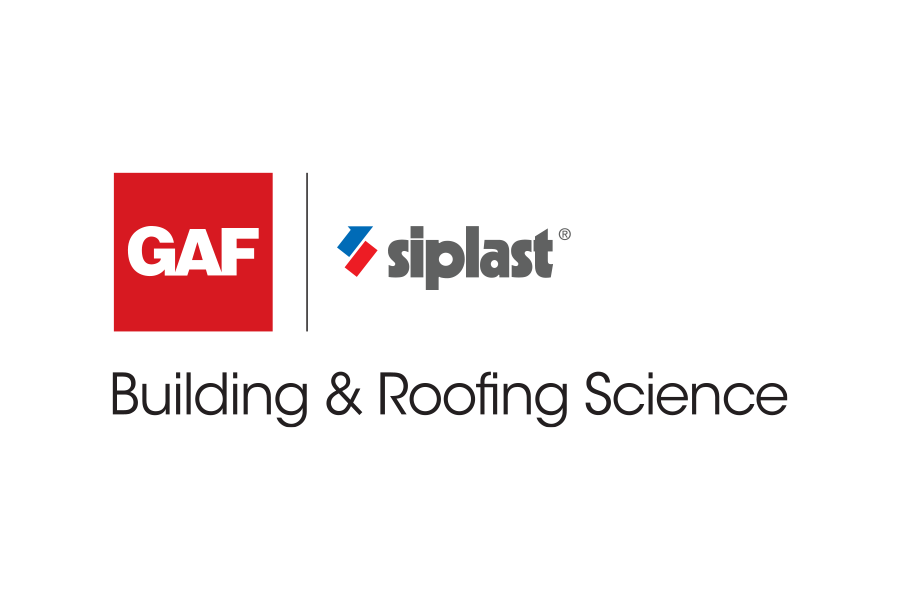Roofs for Cold Storage Buildings
A continuous air barrier is a combination of interconnected materials and systems that require sealed joints and connected components to properly minimize air leakage into or out of the building enclosure. During the design process, designers can use the pen test to trace the air barrier layer around the entire building (without picking up the pen from the paper), focusing on the perimeters and penetrations, and subsequently addressing the details in the contract documents, to help determine where potential air leakage may occur.10 Ultimately, the architects and designers are responsible for determining the need for an air barrier, verifying an air barrier’s compatibility with other materials, identifying all air barrier components of the enclosure, and providing construction details for joints, penetrations and transition areas.

FIGURE 15: Shown is a continuous air barrier that can be traced by using a pen without picking up the pen from the paper.
Winter Construction
During new construction of a cold storage building, construction-generated moisture can move up into the roof system. This moisture can come from curing of concrete floors and roof decks, the use of propane heaters, and/or ambient humidity and rain. If the moisture is trapped in the roof system, the bottom portions of the insulation can freeze during operation. This concern warrants the use of an air barrier/vapor retarder at the deck level to keep construction-generated moisture out of the roof system. However, an air barrier that is vapor open (a Class III or higher vapor retarder) will allow some drying potential during operation of the building while preventing moisture-laden air from getting up into the roof system during construction. Figure 15 shows an example of this.

Detail 303C, Insulated Metal Panel Wall with Coping Cap and SA Vapor Retarder, courtesy of GAF
FIGURE 16: Shown is a vapor retarder installed as an air barrier to help prevent construction-generated moisture from infiltrating the roof system.
Also, simply due to cold temperatures, especially with interior spaces below minus 32F, adjacent materials can become frozen, regardless of air and vapor control. It’s singularly a temperature issue. To that end, the bottom portions (perhaps an inch or two) of insulation can, over time, become frozen, resulting in an effective R-value of zero as well as creating reroofing issues when trying to remove frozen insulation.
Reroofing Concerns
Reroofing a cold storage building provides a unique opportunity to identify and address air and vapor leaks that may be occurring. This is a critical step for long-term success and proper performance not only of the roof but also the building itself. This is the benefit of a reroofing project—problems can be located and solutions determined prior to reroofing.
According to the requirements of the building code, wet insulation is required to be removed prior to reroofing (for re-covering and replacement projects). Frozen insulation is ‘wet’ and has little, if any, insulating value. Most commonly, frozen insulation is located just above the deck. This may also be indicative of some level of moisture intrusion into the roof system. The lowest layers of insulation are also the coldest; they are adjacent to the cold portion of a cold storage building. Determining the source of moisture and addressing the issue (e.g., including a Class III vapor retarder at the deck level) can improve the thermal- and moisture-control performance of the roof and the entire building.
During reroofing of a cold storage facility, it should also be discussed whether the building can be shut down or taken out of service for a reroofing project. In most circumstances, cold storage buildings cannot be shut down, which tends to complicate the reroofing project. When the existing roof system is removed, the steel deck (as typical with cold storage construction) is left uninsulated for a short period of time. This can be problematic, particularly over freezer areas, where the interior temperature is much colder than the exterior. This may create condensation on the top surface of the metal deck. In this case, it may be beneficial to have a vapor retarder in-place at the deck level from original construction to prevent moisture migration into the roof assembly. Specific site concerns during reroofing should be discussed with the designer, contractor and the owner.
Testing
The air barrier control layer can be tested as a material, system or whole building according to the International Energy Conservation Code. For cold storage buildings, it’s prudent to use whole building air leakage testing as a measure to ensure the enclosure air leakage is minimized to save energy, prevent moisture (or ice) accumulation and enable the refrigeration system to perform as intended.
In general, whole-building air leakage tests should be performed when the air-control layer is exposed and repairable without significant deconstruction. Therefore, timing of a whole-building air leakage test is critical because it’s extremely difficult and expensive to deconstruct a completed building and then repair the air-control layer. For cold storage buildings, the timing concern is less critical because the roof membrane and the exterior wall skin is the air-control layer.
In Summary
Avoiding thermal bridging by using adhered membranes and adhered upper layers of insulation, with only the bottom layer(s) mechanically attached, allows for a more effective thermal layer. Reduce or eliminate air leakage across the building enclosure to reduce the potential for moisture gain, condensation and freezing of insulation, as well as heat loss that is associated with air infiltration and exfiltration. Details make all the difference in this case. Consider expansion and contraction potential as well as differential movement when designing the details at interfaces and penetrations to extend the service life and functionality of the roof’s details.
And finally, cold storage buildings are unique because of their low interior temperatures and the resulting vapor drive and significant potential for air infiltration. Taking into account the science of heat, air, and moisture movement when designing the roof system for a cold storage system is paramount for long-term success.
END NOTES
1 “2018 ASHRAE Handbook, Refrigeration.” American Society of Heating, Refrigerating and Air-Conditioning Engineers, Inc. 2018.
2 Zhivov, Alexander and Herron, Dale. “Improvement of Air Tightness in U.S. Army Buildings.” Journal of Building Enclosure Design. Summer 2011. Web. 23 June 2020.
3 ”Cleaning the Air on Air Barriers: A Guide to Air Barriers in Commercial Low-Slope Roof Assemblies.” GAF Technical Services. April 2018. Web. 23 June 2002.
4 Kirby, James R. “Air Barriers and Vapor Retarders: The Current Conundrum in the Roofing Industry.” GAF Blog. 10 September 2018. Web. 23 June 2020.
5 “2018 ASHRAE Handbook, Refrigeration.” American Society of Heating, Refrigerating and Air-Conditioning Engineers, Inc. 2018.
6 Hardy Pierce, Helene and Crowe, Joan P. “Structural Concrete Decks, Vapor Retarders, and Moisture – Rethinking What We Know.” Interface Magazine. February 2020. Web. 23 June 2020.
7 Gatto, Kip; Wong, Grace; and Klaboe, Kari. "Assessing Concrete Moisture in Unconditioned Environments.” Proceedings from the 33rd RCI International Convention and Trade Show. March 2018. Web. 23 June 2020.
8 “A Guide to Cold Storage Roof System Design.” GAF. November 2019.
9 Taylor, Thomas J.; Willits, James; Hartwig, Christian A.; and Kirby, James R. “Insulation Value Optimization for Low-Slope Roofs.” RCI Building Envelope Technology Symposium. November 2018. Web. 23 June 2020.
10 Meyer, Benjamin. “Parapets Part 1: Continuity of Control Layers.” GAF Blog. 27 September 2019. Web. 23 June 2002.
James R. Kirby, AIA, GAF’s building and roofing science architect, has a Masters of Architectural Structures and is a licensed architect. He has nearly 25 years of experience in the roofing industry covering low-slope roof systems, steep-slope roof systems, metal panel roof systems, spray polyurethane foam roof systems, vegetative roof coverings, and rooftop photovoltaics. He understands the effects of heat, air, and moisture movement through a roof system. Jim presents building and roofing science information to architects, consultants and building owners, and writes articles and blogs for building owners and facility managers, and the roofing industry. He is a member of AIA, ASTM, ICC, MRCA, NRCA, IIBEC and the USGBC.
Kristin Westover, P.E., LEED AP O+M, is a technical manager of specialty installations for low-slope commercial roofing systems at GAF. She has experience with a wide variety of projects in the civil engineering consulting industry specializing in repair and restoration of existing buildings, primarily for commercial buildings and high rise residential structures. Kristin’s project expertise includes roofing, waterproofing, facades, parking garages, and pavements. She has performed assessments, written specification and design documents, provided bidding services oversight, and performed construction contract administration. Kristin also has experience in arbitration and litigation support as well as LEED O+M certification for existing buildings.









